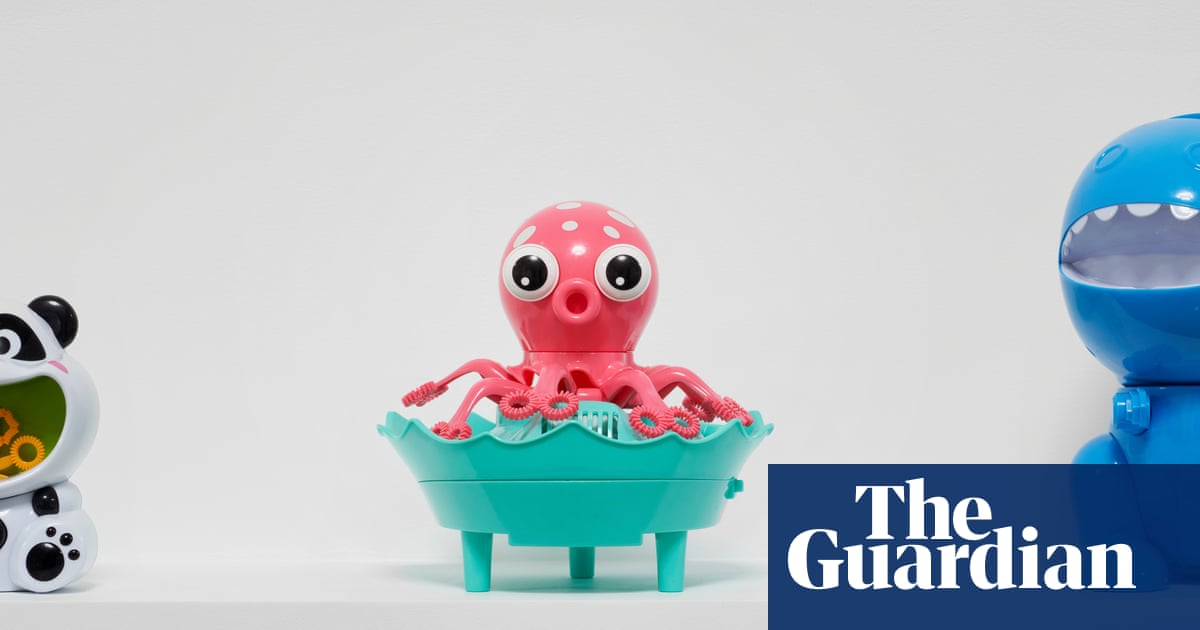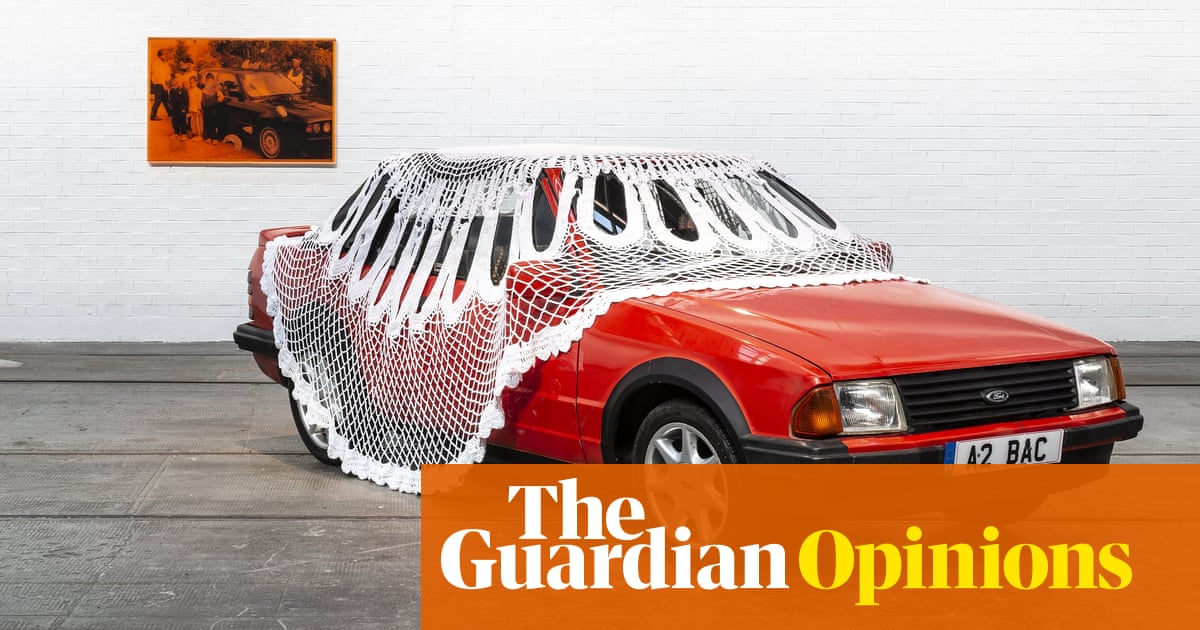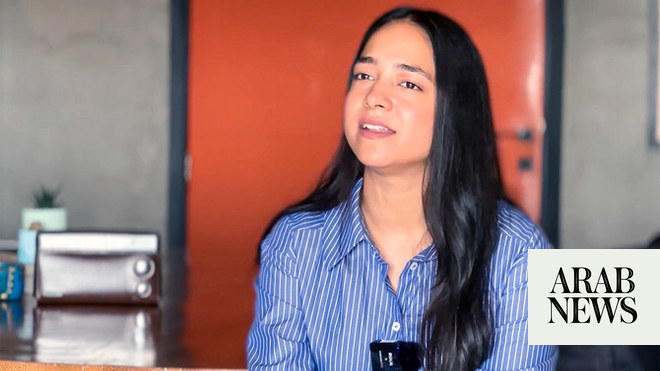
The Turner prize shortlist, as jury chair and Tate Britain director Alex Farquharson rightly points out, provides an annual “snapshot of British artistic talent”. But this year, the last word you would use to describe the actual work of the four shortlisted artists is “snapshot”. Instead, they have all engaged – through a variety of approaches and mediums – with the long-term and the bigger picture, seen through remarkably wide-angled political and social lenses.
The rules of the prize have changed over the years but three of the four artists – Ghislaine Leung, Rory Pilgrim and Jesse Darling, all born in the 1980s – would fall under the now discontinued age limit of artists under 50; the other artist nominated this time, Barbara Walker, was born in the 1960s. Only Walker and Leung are based permanently in the UK, with Pilgrim moving between the Netherlands and Dorset, and Darling working from Berlin. The shows for which they were nominated also extend beyond the UK, with Walker’s Burden of Proof being shown at the Sharjah Biennial in the United Arab Emirates and Leung’s Fountains in Copenhagen, Denmark.
Here, the artists reveal their plans for the Turner prize show, which opens at the Towner Eastbourne this month. All four offer critiques of the structural, the systemic and established ways of thinking and doing, while simultaneously exhibiting empathy and sensitivity to individuals, from victims of the Windrush scandal to some of those hit hardest by lockdown and Covid-19. The winner of the £25,000 prize will be announced on 5 December.
Jesse Darling
“I grew up in Oxford, so it was quite a big deal,” says Jesse Darling of the nominated show at Modern Art Oxford entitled No Medals No Ribbons. The title alludes to a relative of Darling who, as a prisoner of war in Germany in the second world war, made prosthetics for the arms and legs of injured comrades from scrap obtained in the camp. After the war he modestly declined to be honoured. Darling’s work similarly appears to use apparent detritus for related ends.
The show took in work from the last decade or so – “very much not a retrospective, but interesting to see what tune I’d been singing all this time” – and included a “dysfunctional” steel rollercoaster, held together in part by bandages; modified mobility aids such as “crawling canes”; “embarrassed” billboards with models’ faces turned to the wall as “if ashamed of having to sell different things all the time”; and assorted creaturely, heavenly, as well as more everyday objects, in various constructions.
Darling’s work has often been discussed in terms of fragility or impermanence or vulnerability, and sometimes interpreted as a personal statement. But Darling sees the sense of precarity as reflective of a more general mood. “The work has been written about as though it’s an expression of my personal fragility, but actually it’s a wider political instability. I’ve always had a kind of conviction that things are not so stable and the idea that things are stable and continuous is often deployed by the likes of empires for obvious reasons.”
Darling has also been nominated for a show at Camden Art Centre, Enclosures, that used bricks and clay to explore the fact that Britain is in “an ongoing process with the privatisation of public space, and consequent effect on the social environment”. Although the Turner exhibition prefers not to show new work, Darling is not one to “plug and play” and is now mulling “those steel barriers with little legs that, if you choose to look, are absolutely everywhere. Maybe they’ll force people to move in a certain way in the gallery, and whether that becomes malignant or funny or sad or damaged, will emerge.”
And as for the sense of impermanence across the work, Darling notes that this idea extends beyond the individual body to all human edifices, “including political systems, hegemonies, institutions and so on. It feels sort of optimistic to know that nothing lasts for ever. And that which feels totally intractable, is essentially bodily in some way and therefore subject to the same kinds of seduction, dereliction and transformation. If we think of other people, things and beings as being fungible just as we are, it becomes difficult to despise any of them.”
Barbara Walker
Burden of Proof, exhibited at the Sharjah Biennial earlier this year, is Barbara Walker’s response to the 2018 Windrush scandal, in which Caribbean people legally resident in the UK for decades were wrongly targeted by immigration authorities, with many detained or deported. The work takes the form of large-scale charcoal wall drawings of victims which overlay drawn facsimiles of the documentation that proves their right to stay in the UK. Walker physically erases them at the end of the exhibition, in a metaphor “for how the Black community is overlooked, ignored, and even dehumanised by society”.
The scandal relates to issues of “class and power, gender, race, representation and belonging that I explore in all my work,” she says. “For many years, I documented the lives of the Black community in Birmingham; personal stories are deeply rooted in my art.”
Walker was made aware of the scandal through the reporting of Amelia Gentleman in the Guardian, and Gentleman put her in touch with some of the victims. It was six months after Walker first met them that she began her drawings. “It was important to build relationships and trust,” she says. She asked each participant for two documents that proved their status. “These forgotten ephemeral pieces of paper were somehow more important to the government than the individuals themselves,” says Walker. “I used these documents as a backdrop, placing the figure on top. This creates a tension: the figure essentially competes with the document and struggles to show through; disappearing under the document echoes their experiences.”
Walker explicitly places herself, and her subjects, in a longer art-historical context in terms of the scale and sense of grandeur, citing the tradition of religious art she has observed over decades of visiting London’s National Gallery. “I do want it to be seen through an art-historical lens, and part of my research has been to look at other artists who have explored similar concepts – the ideas of visibility and how to represent it.”
In the past, Walker has tended to work for two or three years on a series, and she says Burden of Proof is not yet finished. “There’s a lot of thinking, testing and unpacking involved in my process.” But Eastbourne will be the first time that her subjects will see the work in person. “It was a privilege to work with them and learn of their experiences. I wanted to make work that reflected their individual stories, and also the complexities of diasporic identity.”
Rory Pilgrim
In 2019, Rory Pilgrim was commissioned by the Serpentine Gallery to make a work for its Radio Ballads series, an initiative inspired by the groundbreaking 1950s BBC project in which folk singers Peggy Seeger and Ewan MacColl shared the voices, stories, sounds and songs of rarely heard communities.
Pilgrim makes art that takes in music, film, text, drawing and live performance, and is known for working in the field of social care, and engages deeply with collaborators. As such, for the Radio Ballads series Pilgrim was introduced to community arts organisation Green Shoes Arts in Barking and Dagenham, east London. The organisation provides art projects for disadvantaged and vulnerable young people and adults, and the artist began an extended period of engagement.
“I quite often volunteer with groups, just getting to know people,“ Pilgrim explains. “I helped out with the music class and the theatre group as I thought through how the project might develop.”
Pilgrim had recently been working with disability and climate activists, and had read the visionary thinker R Buckminster Fuller’s 1969 essay on the challenges facing humanity, Operating Manual for Spaceship Earth. “He introduces [the idea of] this piano kind of flung out into the sea, and people using it as a life raft,” says Pilgrim. “From that it extends to the idea of the Earth itself as a lonely life raft, all that we have to hold on to.” Pilgrim set up workshops to examine the wider concept of life rafts, and the way they might apply to the members of Green Shoes’s everyday lives. “And then Covid came. And suddenly everybody felt the need for a life raft.”
Two years later than intended, last year’s Serpentine show, RAFTS, featured Pilgrim’s film, music and drawing as well as the testimonies and experiences of many collaborators. Pilgrim has sung in cathedral choirs and toured in bands and calls music “my first language”. At a one-off performance of RAFTS at Cadogan Hall in London in November last year, a series of songs formed an oratorio. There were also presentations of letters, poetry and responses from collaborators in a wide-ranging engagement with issues of wellbeing, rescue, recovery, safety and much more. The Eastbourne show will combine elements of the live and gallery experiences.
“The idea of the raft can be flexible in form – a song can be a raft, a relationship can be a raft and so on – but also in its scale,” says Pilgrim. “It asks: how can we provide support structures in our daily lives? And also: how can we take care of this precious spaceship Earth we find ourselves on? It’s something that runs throughout my work: how do we deal with the overwhelming macro within the everyday micro?”
Ghislaine Leung
The title piece of Ghislaine Leung’s nominated exhibition at the Simian Gallery in Copenhagen, Fountains, was made by diverting water from a human-made lake above a bike storage facility turned art space, so that it was channelled through the roof and dramatically splashed on to the gallery floor. Fountains will also feature in Eastbourne, but there is no reason to assume it will look the same. The physical aspects of Leung’s works are determined by a “score”, which is then executed by local curators who take into account the architecture and resources they have at their disposal. The score for Fountains simply reads: “A fountain installed in the exhibition space to cancel sound.” The “same” artwork will emerge in a different guise.
“I call them scores, not instructions, because it’s more analogous to how music works,” says Leung. “In that sense I am theoretically the composer, and the institution is the performer.” Other work from the Simian show that will feature in Eastbourne includes “a baby monitor installed in one room and broadcast to another”; and a wall painting of a grid “divided into all the hours of the week with the portion of studio hours available to the artist marked in black.”
At Simian, one end of the baby monitor was placed in an administrative office, and the activities of the workers were piped into the gallery. It gave a glimpse of “the thing that maintains and supports the work”, Leung says. The wall painting of the grid, meanwhile, illustrates the time she has left for art after childcare, work and other parts of her life. A group of toys from a local toy library – in Copenhagen there were bright plastic dinosaurs, cats, an octopus and so on – are given catalogue numbers and displayed for the duration of the exhibition, enabling a Leung artwork to subsequently be “borrowed”, essentially using “the library infrastructure system to create a public sculpture”.
Leung says that if some of her work is about the “redistribution of architectural spaces”, this grid is about how she herself, as a working artist, is distributed.
The themes that emerge – work and motherhood; institutional waste; the way art galleries operate – raise thrilling possibilities about what might happen if the design and structures of one institution are applied to another. “A certain sense of plasticity is introduced when you take what is thought to be fixed or standardised and introduce another set of standards,” she says. “You can’t then help but question the underlying assumptions.”












